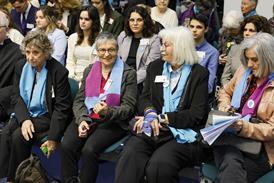A rise in traffic accident damages may disguise a worrying trend in settlements.
When it comes to road traffic accident claims, the fixed-fee portal regime has been good for defendants, and bad for claimant lawyers. Right?
It’s good for defendants because they are paying out a lot less in legal costs, and bad for claimant lawyers because they are operating under very tight margins.
This is the theory – and of course it is a sweeping generalisation.
But now there are rumblings of discontent emanating from the defendant camp, which is concerned that the savings delivered by the portal may be under threat. Fixed fees are low, yes, but it turns out that damages are actually going up.
So insurers are paying out less in legal costs, but more in damages.
Figures churned out by the Claims Portal’s executive dashboard reveal a definite increase in damages levels over the past few months, and the figures for August (the most recent available) show damages at their highest level since the portal was set up in 2010. Also on the rise is the number of claims that get as far as stage 3.
So what do these figures mean?
Does it mean that claimant lawyers are responding to low fixed fees by fighting even harder for clients, pushing up the client’s damages, and maximising their own success fee income as a result? If damages are going up, then some firms must be doing this – and insurers say they are seeing new heads of claim such as psychological loss being used to boost damages.
This might be bad news for insurers, but provided the damages being sought are genuinely reflective of the injury sustained, then it is clearly a positive development from the perspective of accident victims, as well as their lawyers.
But we should not be too quick to applaud the claimant sector for fighting harder for clients – because there is also a real concern in the market that the rise in damages is masking what may be going on at the other end of the spectrum.
One key question for claimant firms is whether they should be taking out ATE for their clients. Ultimately, that will depend on what the insurers are charging for cover. But if a firm is routinely taking out ATE at the start of every case (if you leave it until a Part 36 offer is received it will be prohibitively expensive), then it will clearly empower the firm to push back on low Part 36 offers more boldly.
Interestingly, some ATE insurers are specifically looking at the problems faced by law firms, and trying to tailor their products accordingly. As we report in October’s Litigation Funding, insurer Elite is one example: it has just launched an add-on service to its ATE where – provided cover is taken out at the start of the case – claimant lawyers can obtain quantum advice from independent barristers as part of their cover.
The theory is that this advice can then protect solicitors from undersettlement claims.
The market is still adapting to the new claims environment, and we will no doubt continue to see fresh developments coming from both the claimant and defendant side – with the latter likely to start exerting downward pressure on damages in a bid to reverse the current upward trend.
I hope we will also see more innovative thinking from the ATE sector to support claimant lawyers in getting the best result for their client.
Rachel Rothwell is the editor of Litigation Funding magazine

















![David Lester (senior partner at Blythe Liggins), Darryl Barnes, Jagdeep Sandher (head of dispute resolution at Blythe Liggins)[4]](https://d1d8vslyhr7rdg.cloudfront.net/Pictures/274x183/4/2/8/116428_davidlesterseniorpartneratblytheligginsdarrylbarnesjagdeepsandherheadofdisputeresolutionatblytheliggins4_981603_crop.jpg)









25 Readers' comments